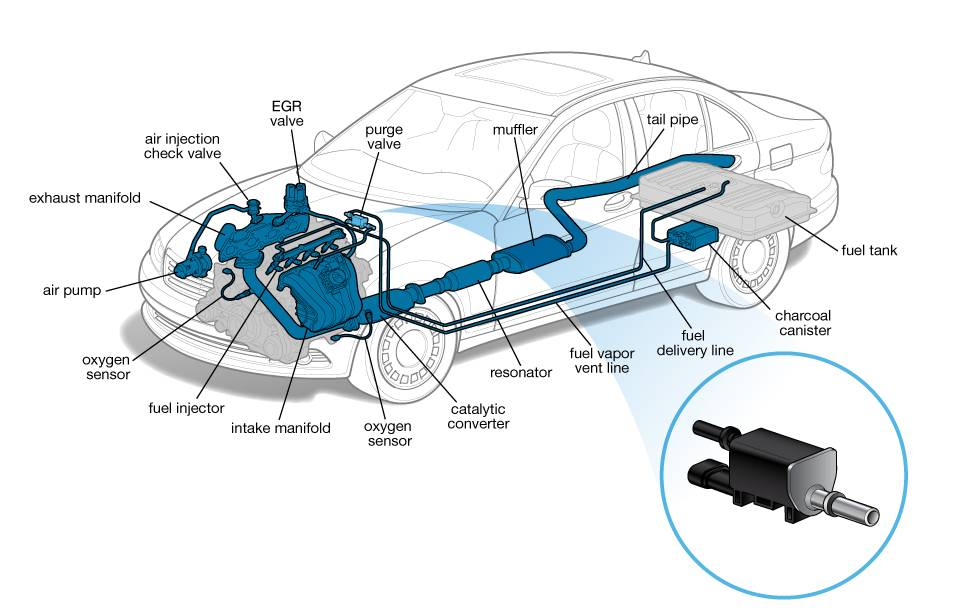What Does A Vapor Canister Purge Valve Do

The humble vapor canister purge valve. It's not exactly the sexiest component in your engine bay, but it plays a critical role in reducing emissions and maintaining optimal engine performance. For years, it’s been a silent workhorse, managing fuel vapor recovery in internal combustion engines (ICEs). But as the automotive landscape rapidly evolves, its role – and the technology surrounding it – is transforming, impacting everything from hybrid systems to, surprisingly, even electric vehicles (EVs).
Understanding the Basics: Vapor Canister Purge Valve 101
Let's quickly recap the basics. In an ICE vehicle, gasoline evaporates, creating fuel vapor. This vapor is harmful to the environment and, if vented directly to the atmosphere, contributes to smog. The vapor canister, filled with activated carbon, absorbs and stores these vapors. The purge valve is essentially a computer-controlled valve that opens and closes, allowing the engine to draw the stored fuel vapor from the canister and burn it during normal operation. This simple yet effective system prevents fuel vapor from escaping into the atmosphere, improving air quality and fuel efficiency.
The Purge Valve in a Hybrid World: A More Complex Role
Things get more interesting in hybrid vehicles. With the intermittent operation of the internal combustion engine, managing fuel vapor becomes more complex. The purge valve needs to be even more precise and responsive to handle the fluctuating demands of a hybrid system. Sophisticated algorithms and sensors are employed to optimize the purge process, ensuring that fuel vapors are effectively managed whether the engine is running constantly, cycling on and off, or completely off. This increased complexity demands highly reliable and durable purge valves that can withstand frequent cycling and varied operating conditions.
Beyond the Valve: The Rise of Smart EVAP Systems
The future is about more than just a better valve. We’re seeing the emergence of "smart" EVAP (Evaporative Emission Control) systems. These systems incorporate advanced sensors, predictive algorithms, and cloud connectivity to monitor and manage fuel vapor in real-time. These systems can anticipate vapor generation based on factors like ambient temperature, fuel tank level, and driving patterns. This allows the system to proactively adjust the purge valve operation, maximizing vapor recovery and minimizing emissions. Imagine a system that learns your driving habits and optimizes vapor management based on your typical commute and refueling patterns. This level of personalization will become increasingly common.
The Unexpected Role in Electric Vehicles
Now, you might be thinking, "What does any of this have to do with electric vehicles?" Surprisingly, even EVs are starting to incorporate some form of vapor management, albeit in a different context. While EVs don't have gasoline fuel tanks, the materials used in battery packs and other components can still emit volatile organic compounds (VOCs). These VOCs can contribute to cabin odors and, in some cases, pose health concerns. Therefore, some EV manufacturers are exploring the use of small vapor canisters and purge systems to capture and manage these VOCs, ensuring a cleaner and healthier cabin environment. This represents an unexpected application of vapor management technology in the age of electric mobility.
Challenges and Opportunities
While the future of vapor management is bright, there are challenges to overcome. As systems become more complex, the risk of failure increases. Ensuring the reliability and durability of purge valves and associated components is paramount. Furthermore, the integration of smart EVAP systems requires seamless communication between various vehicle systems and the cloud. Data security and privacy are also important considerations. However, these challenges also present opportunities for innovation. Developing more robust and reliable components, improving sensor technology, and enhancing data analytics will be crucial for the continued success of vapor management technology. The move to alternative fuels, like hydrogen, will also require completely new approaches to fuel system and vapor management.
The Vision: A Future of Zero Emissions
The evolution of the vapor canister purge valve, and the broader EVAP system, is a testament to the ongoing quest for cleaner and more sustainable mobility. What started as a simple emissions control device is now transforming into a sophisticated, data-driven system that plays a critical role in reducing our environmental impact. From optimizing fuel vapor recovery in hybrid vehicles to ensuring a cleaner cabin environment in EVs, vapor management technology is adapting to the changing needs of the automotive industry. The ultimate vision is a future where all vehicles, regardless of their powertrain, operate with near-zero emissions, contributing to a healthier planet for generations to come. The seemingly simple purge valve, in its evolved and interconnected form, will be an unsung hero in achieving that goal.
